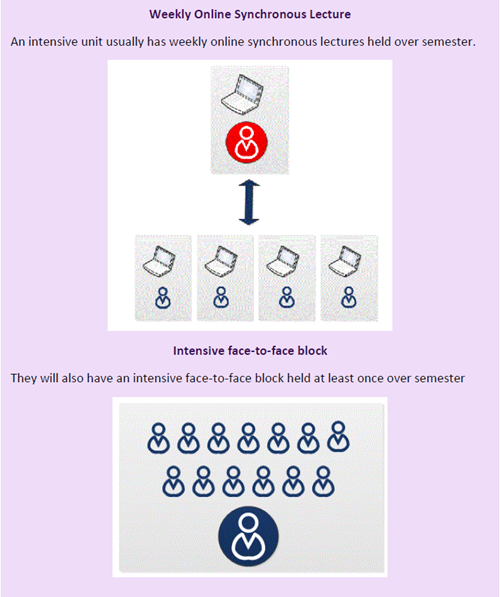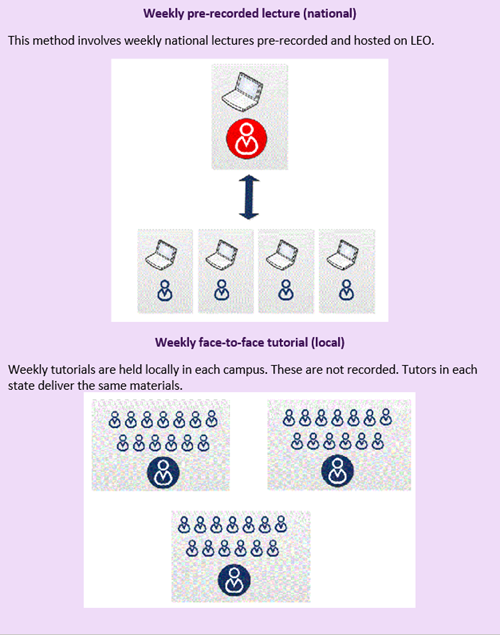Overview
- Blended learning is any combination of face-to-face and online modes to achieve an overarching learning goal.
- There are numerous approaches for designing blended learning units. Here are some approaches that are commonly used at ACU.
- Approaches are not mutually exclusive. An intensive unit could also apply a flipped classroom approach and be delivered across multiple campuses.
- Examples provided are to stimulate interest and ideas.
On this page
Example 1 – flipped classroom
Example 2 - Intensives
Example 3 – Multi-campus
Example of Practice
Example 1 – Flipped classroom
The Flipped classroom model is a pedagogical approach that involves students working through preparatory self-paced online material prior to face-to-face sessions. Students complete the online learning component so they are familiar with important concepts and can explore and consolidate these in a more applied way within class time. This maximises face-to-face time, which can be spent applying active learning strategies for deeper learning. There are commonly consolidation activities after the face-to-face sessions.
| Preparation |
Face-to-face |
Consolidation |
- diagnostic/formative tasks
- pre-recorded videos/audio
- readings
- web links
- simulations
- reflection
- activities
|
- active learning
- applied tasks
- collaboration
- projects
- discussion
|
- reflection
- self-check activities
- discussion board
- mind maps
|
Example 2 - Intensives
Intensives are also referred to as ‘block mode’. An intensive unit is a course taught predominantly online, with the addition of a face-to-face block ("an intensive"). The face-to-face component may be at the start or end of a semester or take place several times across a semester.
The online material is often complemented by weekly synchronous webinars.
Intensives are also referred to as ‘block mode’. An intensive unit is a course taught predominantly online, with the addition of a face-to-face block ("an intensive"). The face-to-face component may be at the start or end of a semester or take place several times across a semester.
The online material is often complemented by weekly synchronous webinars.

Example 3 - Multi-campus

Example of Practice
In this video, David Spencer, from the Thomas More Law School at ACU discusses how he designed and delivers his law elective unit, LAWS408: Alternative Dispute Resolution. David gives his four guiding principles for designing and delivering in intensive mode which he lists as:
- in a flipped classroom do not repeat material;
- use multi-modal forms of delivery;
- make learning activities and assessment authentic; and
- choose fun over content.
David discusses a few techniques he uses in intensive mode learning and teaching such as the use of: relevant film clips from comedy films; role play simulations that immerse students in real-world legal disputes; technology to conduct a blind negotiation only using the texting facility on students' smartphones; and, a physical team game where student teams negotiate over a limited supply of Leggo blocks to build a model in the shortest possible time.



